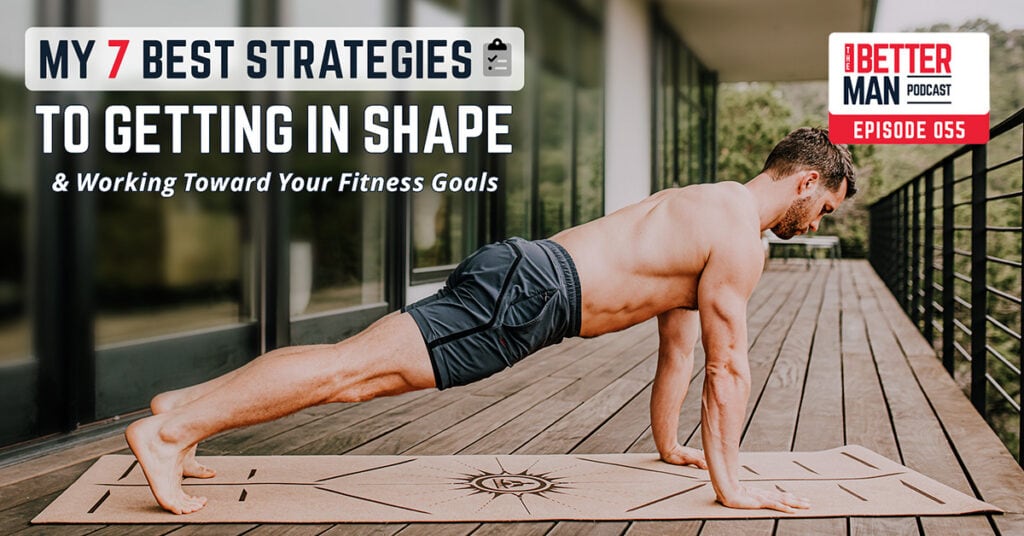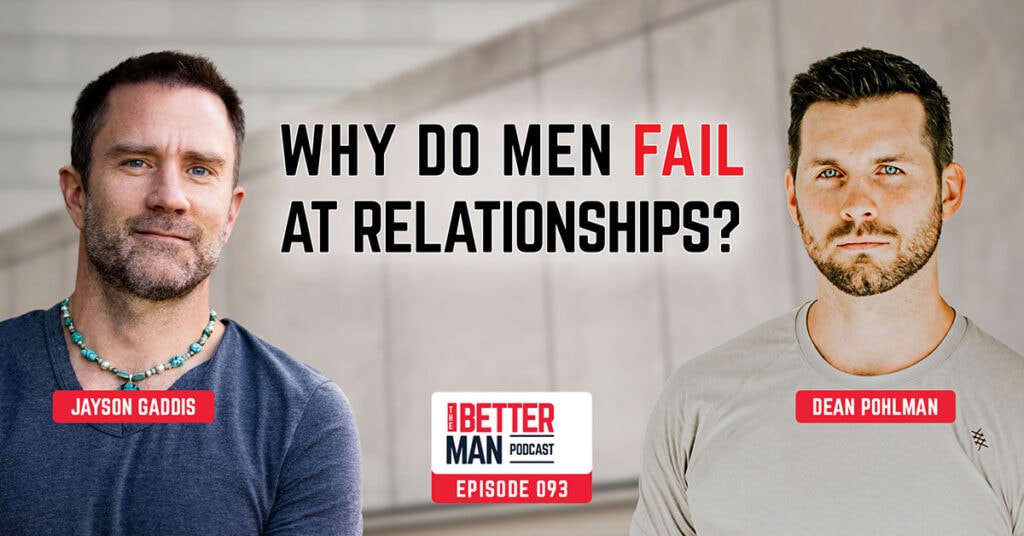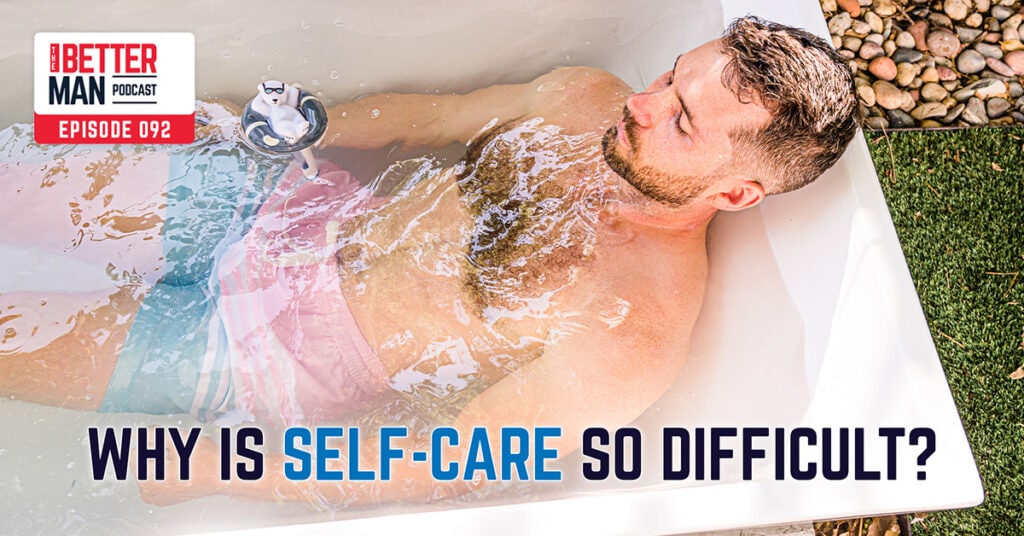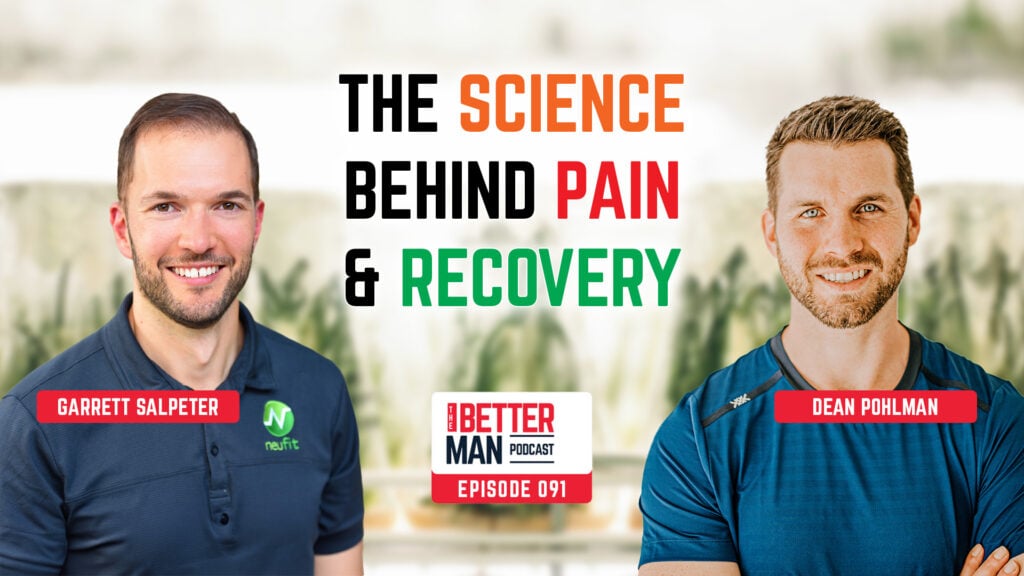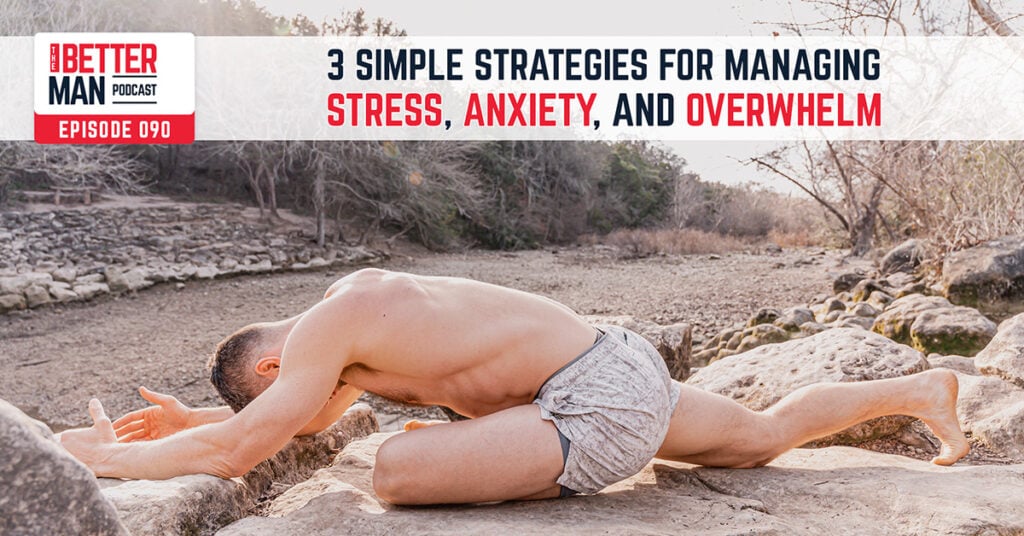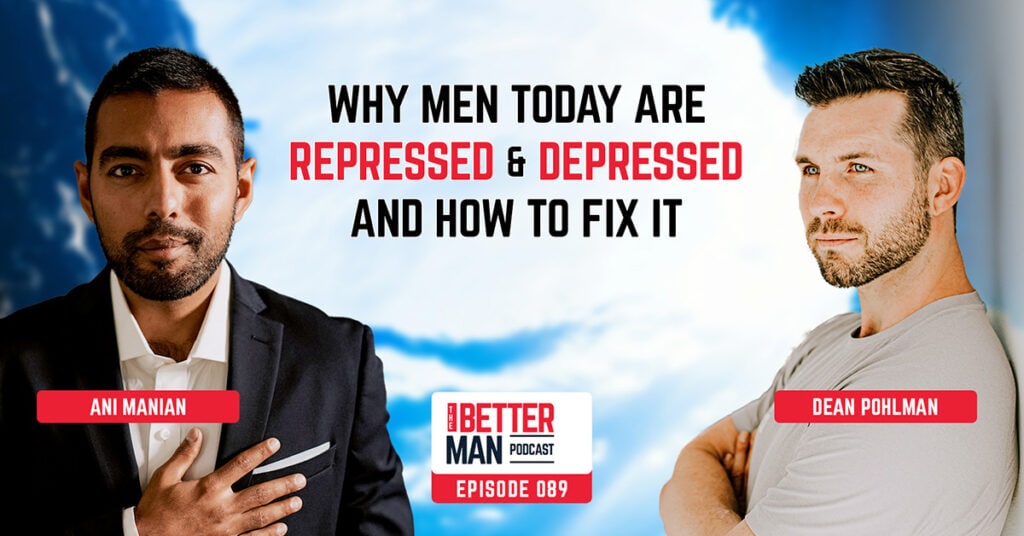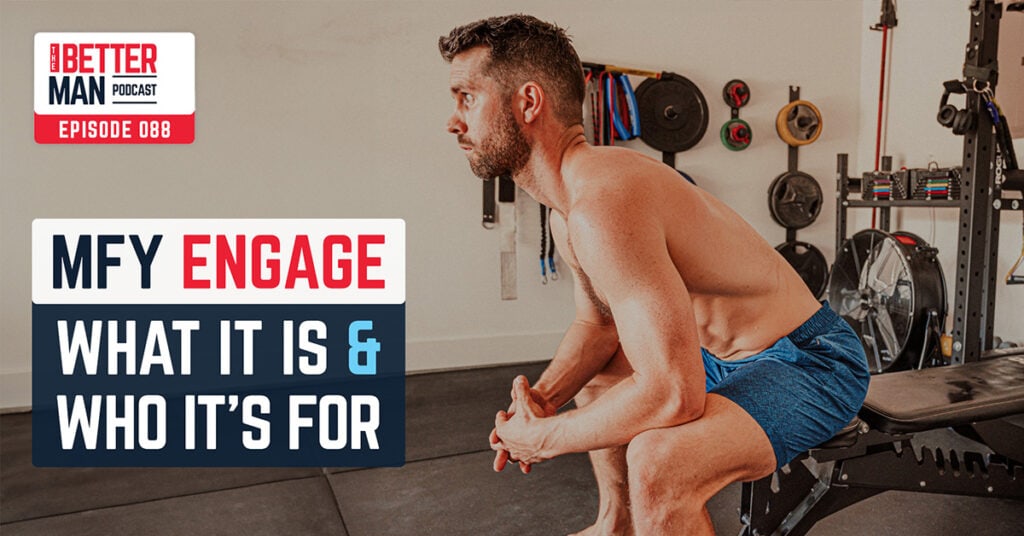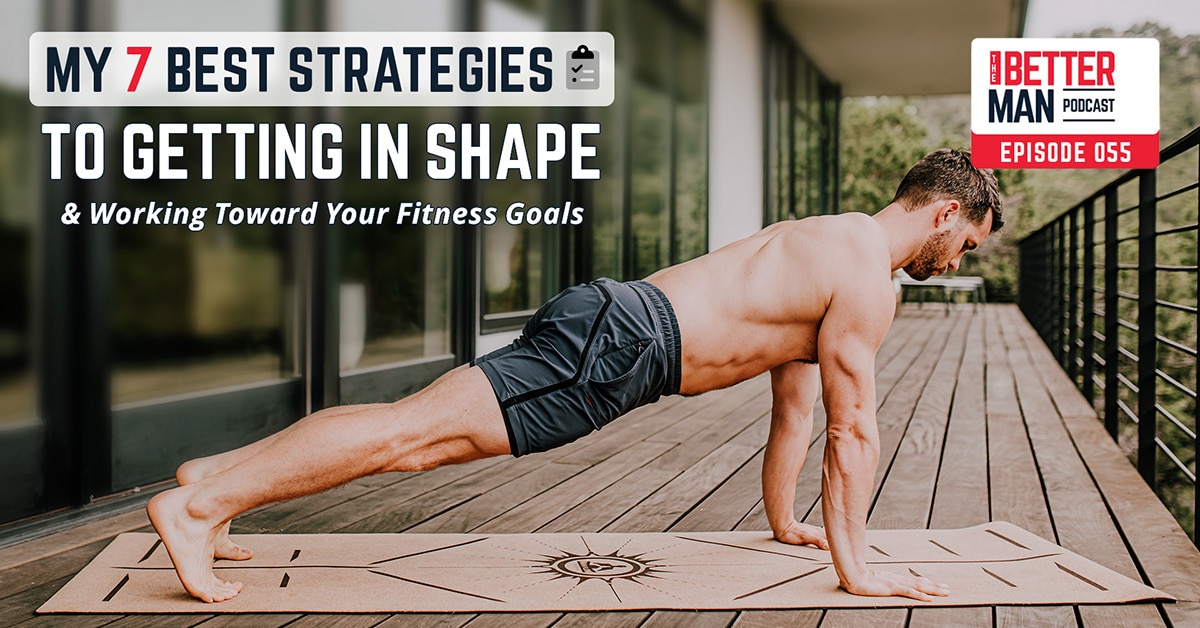What’s up, guys? It’s Dean. Welcome back to the Better Man podcast. Today is a solo episode and I’m going to be talking about my seven best tips to moving toward your fitness goals, how to get into better shape, how to be more consistent. And I want to talk about some of the misconceptions that accompany how to do this properly.
I think a lot of people think you have to rely on motivation and discipline and that you have to give it your all every time or you’re not going to make progress. And it’s much more of a steady game, right? This is much more of a learning how to make this process sustainable. It’s much more about understanding that you’re not always going to be motivated, but you do it anyways because it’s important to you and also about respecting your body’s needs as you go.
So I’m going to go through seven tips that I know are going to be helpful to you and especially pointing out what I see a lot of, at least in the community of men that I work with, a lot of the misconceptions and a lot of the mistakes that I think they’re making that are making it more difficult for them to see the results that they want to see from their workout programs.
Let’s get into the conversation here. All right. So my seven best tips on getting into better shape and working toward your fitness goal is my tip. My first tip is motivation is overrated. Stop waiting for motivation and go do it. Action inspires motivation, not the other way around. This is a concept that I learned from a book called The Subtle Art of Not Giving a Fuck by Mark Manson.
This is a fantastic book, and one of the concepts that I learned in it is this idea that motivation doesn’t. Doesn’t you don’t just motivation doesn’t strike right. You’re not sitting around and motivation strikes you. What helps with motivation is taking action, right? So taking action inspires motivation, not the other way around. So if you can reframe your idea of how motivation works, if you can understand that you taking action leads to motivation and not the other way around, then you’re going to be a lot more motivated to do things because you recognize that it’s your action and not just sitting around waiting for it to happen.
It’s being proactive instead of reactive, which is a big theme which I’ll discuss in this later as well. You’re not going to feel like working out every time you have a scheduled workout. You know your body is you are biologically wired to conserve energy. So it’s very normal that you don’t want to expend energy. It’s you’d much rather biology would much rather biology.
You would much rather have us sitting on a couch eating food. Right. Conserving energy and and making sure that we have plenty of resources. So it is against your biology to want to work out. The reason why we work out, though, is because it’s important to us. We have determined that it is important to our values. It is important to who we are as a person because of some reason related to our health.
Maybe we want to feel our particular away. Maybe we want to avoid disease, maybe we want to be functional and be able to move when we’re older. So if you haven’t already done that, there’s a great exercise called the Seven Whys Exercise. We have this as part of our Getting Started series, but we didn’t make it. It’s a it’s a it’s a universal it’s a universal exercise that can be done for anything to help you better understand your motivation for something.
So use the seven whys. Figure out what your personal, emotional based motivation is for wanting to exercise and use that as motivation. Don’t rely on motivation to strike. Take action instead. I’m not excited for every workout, but I do it because it’s important to me. So. All right. Number two is understanding the difference between I don’t feel like it versus my body can’t do this today.
There are days that your body literally cannot do the workout that you want it to do. Maybe you didn’t sleep well. Maybe you did a really hard work out the day before or a couple of days before. Maybe you haven’t done the necessary recovery work so that your body feels up to whatever workout is ahead of you, but that’s different than you just not feeling like it that day because you just don’t feel like it because you’d rather not do it.
Learning this difference just takes some takes some intuition. It takes some time, some practice. If you’ve been working out for a few months, you should kind of understand what this feels like. If you’ve done a workout on a day when your body wasn’t ready for it and you maybe hurt yourself a little bit or you strained your muscle or you just didn’t warm up enough, then you will know in the future.
Okay, When I feel this way, this means that I need to scale back my workout, right? I need to do maybe I need to do a less intense workout. Maybe you need to do fewer reps, fewer sets, less weight, or maybe you do an entirely different workout. And if you do, you’re going to do an intense yoga session.
Maybe you do a restorative yoga session instead. If you were going to do a weightlifting session, maybe you do some bodyweight exercises or you go for a walk instead. But it’s important to understand what that difference is and to be able to modify your workout in response to it. But you don’t want to do nothing typically unless you’re taking a nap.
I think that taking a nap is a fantastic idea. If you are tired and you really need it, taking a nap is great, but I would still go for a walk as well. So again, I think it’s important to understand I don’t feel like it versus my body can’t do this today and you’ll develop that skill as you are consistent with your workouts.
To number three is to plan it out, to be proactive instead of reactive guys. There is a world of difference and effectiveness and you following your workout program, when you simply plan the workouts in advance. There’s a very often cited study that tracked physical therapy patients and their their adherence to their at home exercise program. If you’ve done physical therapy before, you probably go in, you know, once, twice, maybe three times per week.
But then you also have home exercise. And so they found that the people who simply said you simply came up with a plan of when to do their exercises, they had a no to simply higher compliance rate with their at home exercise compared to the people who did not plan for it. So this has been proven. This is really simple, but you want to plan your workouts in advance.
Part of that is also being proactive and looking at kind of your workout schedule and understanding, okay, how am I going to feel in response to these workouts? You know, so if you have an intense workout on days one, three and five, then you’ll know that you’ll feel sore on days two, four and six, and maybe you can do something to account for that, right?
So maybe you do some foam rolling, maybe you do some restorative yoga to assist with that. So it is helpful to be able to anticipate soreness or to be able to anticipate workouts and to be proactive about them, do the things that, you know are going to help you and also pay attention to patterns in your training. When you pay attention to those patterns in your training, you’re able to be proactive in the future.
So, you know, recognize the effects of certain exercises. Maybe if you followed a particular day or particular time, you notice that the next day you are less sore or you are more prepared for your workout. So it’s a good idea to pay attention to those patterns in your training and to be able to be proactive in applying those in the future.
Tip number four is to do your best, not based on every workout you’ve ever done, not comparing your entire workout history to that particular current workout, but based on how you feel that day. So you’re doing your workouts the best you can that day at that time. It’s not about comparing yourself and holding yourself to a standard that you did previously, but recognizing that your fitness has ups and downs, your day to day fitness, your day to day overall feeling is going to have ups and downs.
You’re going to feel stronger on some days than others. You’re going to get better sleep on some nights than others. You’re going to fuel differently. So you might feel you might be feeling great one day because you slept well, because you ate well, and you might be feeling not so great another day because you didn’t sleep well, you didn’t eat well.
Maybe you got off track from your food or you, you, you know, you splurge or whatever it was, but you’re up your your day to day fitness is going to have ups and downs. And it’s important to not hold yourself to a certain standard every day and get disappointed when you don’t do that. Well, every day. It’s it’s normal that you’re going to be up and down.
You know, we have things that are go we have things that go on in our lives that make it so that our sleep is not always the best it can be. Things come up in general, we want to focus more on the overall trend. Is your fitness improving over time? Are things getting better over time rather than looking at improving every day?
There’s so many aspects of your day to day health that, you know, there’s sleep, there’s food, but there’s also, you know, what’s going on in your life. Are you stressed? Are you working more? Do you have more going on than usual? So, you know, for me right now, I am I have a newborn, so I’m waking up at night and I have scaled back my workouts dramatically because I’m not sleeping that much.
And that’s really important. So, you know, so it’s important for me to recognize, okay, I’m in this state right now where I’m not getting as much sleep as I want to, so I’m not going to hold myself to the standard of what I was doing when I was getting a full night of sleep, when I was getting a solid eight and a half hours sleep and also doing all of my you know, doing all of my morning, my full morning routine, doing my full recovery routine.
It’s not happening for me right now. So I’m not holding myself to that standard. So it’s important to recognize that. Number two, that tip number five is you’re not a kid anymore. So it’s time for you to take care of your body as we get older, you’re going to have to do more recovery work. You’re going to have to be more aware of what you say yes to in your workouts.
For me, the biggest shift has been recognizing that there is a difference between what I am able to do that day and what I am able to do without feeling like crap the next day. So I’m not pushing myself to my absolute limits every workout unless I know that I’m going to feel really saw the next day. So it’s important to understand that this is now a longevity game.
I had a so I had a podcast with Shane Dowd, which is a really good episode. Go back and check that out. Shane Dowd, he’s the founder of Dot ROM and he talked about how he shifted his fitness perspective from short term performance to being able to compete when he’s a senior citizen, right? So he’s looking at his training from a very longevity focused perspective as opposed to trying to, you know, hit a new record in six months, because that’s ultimately if you’re doing that and you’re pushing yourself really hard every day with a short term goal in mind, that might not be helpful for your long term fitness.
So there’s a lot that goes into longevity. Again, we want to shifting your focus from a short term to a long term reflective. You need to make sure that you’re doing more recovery work, which means you’re doing more things like foam rolling. You’re doing things like restorative yoga sessions with man for yoga. You also want to make sure that you are warming up before strength training.
We actually just put out a brand new useful playlist that has all my favorite warm ups in the Menthol Yoga Workout library that you can use to make sure that you are warming up your joints safely, that you’re not going to be using your body improperly and contributing to imbalances. You’re going to get a better workout and you’re going to feel less sore the next day when you do these warm ups.
And then we also need to make sure that we’re doing the necessary complementary work. So if you are a runner, you need to make sure that you’re doing at least some form of strength training to help support your hips so that you don’t get runner’s knee. If you are a weightlifter, that means that you need to be working on your mobility.
You need to be doing your manual yoga so that you don’t have overuse injuries or are developing imbalances that are going to cause chronic back or knee pain or not be able to work out. So you need to be smart about your training, your body is less forgiving as you get older and you need to be smart about that.
Tip number six, This is a big one. Sleep nutrition, hydration, stress management being social finding purpose. These are all the other aspects of fitness that are outside of your workouts that help support the effectiveness of your workouts and those things. That’s a huge breath of topics. Those are things that I can’t explain in a single so a podcast, but those are things that are going to help you with your wellness.
I found it really interesting that the the Harvard Longevity Study, this is something that’s been quoted multiple times on this podcast, but it talks about the results of what determined what was the most important thing when it came to determining overall health. And it was your social network. It was based on the quality of your relationships, not on your food, not on your nutrition, not on your workouts, not on your sleep, but on your relationships, the people in your life.
So there are all of these other aspects of of fitness that are going to help support the effectiveness of your workouts. And if you’re not doing these things, if you’re not taking a look at your sleep, making sure that you’re sleeping 8 hours a night, if you’re not looking at your nutrition, eating a healthy diet, if you are not hydrating, if you’re not drinking, you know, a significant amount of water a day.
A good rule of thumb is just aim for 100 ounces of water If you’re not managing your stress right. If you’re not taking a step back from the business of your life and doing some journaling, doing some meditating, going on some long walks, if you’re not being social, if you’re not hanging out with people, you’re not connecting with other people.
If you’re not if you’re not working on intimacy with other people, meaning being vulnerable, not just on a physical level, but on an emotional conversational level. And if you’re not finding purpose, right, and finding purpose could be many different things. It could be you’re it’s it’s it could be doing something that means something to you that’s helping to help other people.
It could be you finding God in whatever way that means. It could being you having a sense of spirituality. But these are all things that are going to happen outside of your workouts and you’re not going to get the workout, the results that you want from your workouts if you’re also not doing these things. So and then the last tip that I’ll give here is number seven.
And this is to trust the process, to be patient, to follow the steps that millions of people have done before, to get themselves results and to believe that it’s going to work for you. You know, there is there’s a special form of entitlement that is this idea that you’re special and it’s not going to work for you. It’s kind of this idea of looking at something and saying, Oh, that worked for somebody else, but it’s not going to work for me because I’m different.
And that is some bullshit guys. If there are processes that have worked for millions, other of millions of other people, if other people have been able to lose weight, if they’ve been able to get healthy or if they’ve been able to improve their overall health and their wellness, there is no reason that you cannot do that as well.
And I’m not saying that, you know, you’re I’m not saying that you don’t have more going on in your life or that there are special circumstances that apply to you that is going to make it more difficult. It might be more difficult for you, but that doesn’t mean that it won’t work for you because again, there are people that have gone through this process before.
They’ve gotten healthier, they’ve lost weight, they’ve made progress, they’ve improved their flexibility, they’ve gotten better at balance. We know that if you are consistent, if you follow the plan, then you are going to see those results eventually. Not everything is going to work. Something that works for some person is not going to work for everybody. So you might have to work around to figure, look around and test some things and figure out something that works for you and resonates with you.
Part of this is also doing it in a way that is sustainable and enjoyable. So if you hate manual yoga, you’re probably not going to get fit doing manual yoga because you hate it. So I want you to find something that you actually enjoy. If you don’t like running, you don’t have to run to lose weight. You can find other things if you don’t like eating healthy, you can figure out foods that you do enjoy.
And once you get through this process of kind of rewiring your tastebuds to be less sensitive or to be less sensitive, more sensitive, then you’ll be able to understand that, oh, eating healthy tastes good too. I just have to reduce the I just have to reduce the sensitivity of my palate so now I can enjoy these foods. So the point here is that if other people have been successful, then you can be successful too.
And you want to avoid this victim, this special mentality that you’re unique, that you’re special, that you’re not going to be successful when there are millions of people that have been successful. So trust the process, be patient, follow the process, be consistent, try to make it enjoyable in the process. And yeah, the last thing I’ll mention here is it helps to do short challenges or short periods of short, shorter time based goals instead of long term goals.
So if you’re struggling with something, make a goal of doing something for one week, make a goal some doing something for two weeks. When there’s an end in mind, when there is a timeline in place, when there is a definitive start and end, it is much less imposing than thinking, Oh, this is the next ten years of my life.
That’s it’s really hard for us to conceptual allies that this is something that I talk about in an a podcast that I did with a guy named Adam Saad. It’s not released yet. It’s going to come out soon, but that was a really cool episode that we did. And in that we talk about how we can make something more manageable and also how as humans we are just kind of biologically wired to do the things that are unhealthy, do not work out to eat foods that make us fat and unhealthy.
So that was a really cool episode. So we’ll go into this a little bit more there. But I did want to talk about these seven tips. I think these are really important. I hope these are helpful for you. I hope that you’re able to get something out of this. All right, guys. So that concludes this. So a podcast, I hope you got something out of this.
I hope it inspires you to be a better man. I also hope that it gives you some reassurances and maybe some better ideas about how to be consistent with your fitness to do so in a way that’s sustainable, more enjoyable, and also to help dispel some common myths around ideas of motivation and and yeah, those are things that I think are helpful.
So our next episode is going to feature Mike Bledsoe. He is the founder of or co-founder of Barbell Shrugged. He’s gone through a really transformative process over the years that I think is going to be inspirational for a lot of you. So be sure to tune in next week for that. Subscribe to the show if you haven’t already.
Turn on the notifications, however that works here. And then if you haven’t already, please consider leaving a review for the better Man podcast. It’s really helpful if you can. I’m working on getting toward 100 reviews on Apple Podcasts. You can also leave a review on Spotify, Google Podcast or wherever you like to listen to podcasts. And we have video versions of these both on YouTube as well as in the mental yoga members area.
If you want to see those, want to get started, gotten started with mental yoga, really easy to do that. You sign up, you follow the path of programs and you start noticing results. In a couple of weeks, you can learn more and sign up for a free seven day trial at M-F. Why not TV slash join? All right, guys, thanks for listening.
Hope you got something out of this episode. Hope it inspires you to be a better man and I’ll see you on the next one.
[END]
